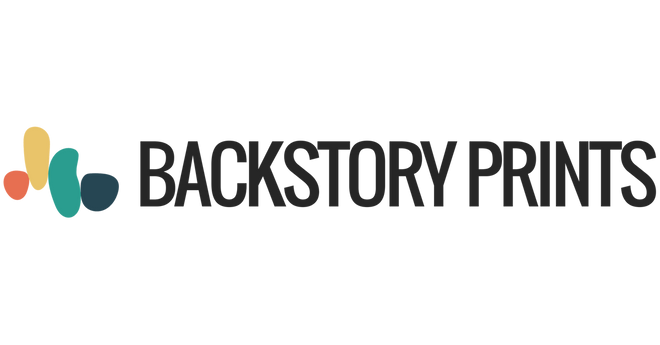DTG vs. DTF? Which one should you choose?
When it comes to choosing printing techniques for custom shirts, two popular choices are direct-to-garment (DTG) and direct-to-film (DTF). The print texture, and various other factors will hinge upon the printing method you opt for. To assist you in making the optimal decision for your business, we've compiled a thorough guide outlining the variances, advantages, and drawbacks of DTG versus DTF printing methods.
What Is DTF printing?
Direct-to-film (DTF) printing involves applying your design onto a shirt using a heat transfer process. This method resembles screen printing, as your design is initially printed onto transfer paper before being pressed onto the garment. DTF printing yields full-color, photo-quality prints with a range of colors and effects.
DTF has gained popularity in custom shirt printing due to its straightforward process. Additionally, the resulting prints are high-quality and can endure for years with proper maintenance.
What Is DTG printing?
Direct-to-garment (DTG) printing, as implied by its name, involves directly applying your design onto the fabric of your shirt. DTG printers utilize inkjet technology to imprint your design onto the garment, akin to printing on a sheet of paper.
DTG printers can generate full-color, high-quality prints in a matter of minutes, rendering them suitable for on-demand printing.
Differences Between DTF vs DTG
Now, let’s get into the nitty-gritty details of DTF vs DTG printing methods.
Fabric Types You Can Print On
One of the key distinctions between DTF and DTG printing lies in the fabric compatibility. DTG printing is constrained to natural fabrics such as cotton and linen. This limitation stems from the inkjet technology in DTG printers, which can solely permeate natural fibers, resulting in inferior prints on synthetic fabrics.
In contrast, DTF printing is applicable to both natural and synthetic fabrics, including polyester and blends thereof. This renders DTF a more versatile printing method suitable for a broader array of garments. Unlike sublimation, which struggles with dark-colored fabrics, DTF enables the printing of vibrant, enduring designs on both light and dark garments.
Texture of the Prints When Using DTF vs DTG
If texture plays a crucial role in your shirt designs, it's essential to consider it when choosing between DTF and DTG printing methods. DTF prints typically exhibit a thinner, flatter, and less raised texture compared to DTG prints. With DTG, an underbase is necessary, and the ink is directly transferred onto the fabric, resulting in a slight buildup of ink that imparts a 3D-like effect to the print.
However, this texture may not always be desirable, particularly if you're aiming for a more subtle appearance. In such instances, DTF printing offers a preferable option as it produces prints with a softer feel. While some DTG prints may feel integrated into the fabric (without an underbase), all DTF prints will remain on the fabric's surface.
Pros and Cons of DTF Printing
If you're still uncertain about which printing method to opt for, let's delve into the advantages and drawbacks of each, starting with DTF.
Pros:
One evident advantage of utilizing DTF is its capability to print on nearly any fabric type, rendering it an exceptionally versatile printing method suitable for a wide range of garments.
Furthermore, DTF prints are less prone to cracking or fading over time compared to DTG prints. This enhanced durability stems from the ink being fused onto the fabric of the shirt, ensuring longevity.
Cons:
Naturally, DTF also comes with its share of drawbacks. One primary disadvantage is that it may not achieve the same level of quality as DTG printing. This discrepancy arises because the ink doesn't permeate the fabric but merely rests atop it. Consequently, the print may lack sharpness, and the colors may appear different compared to DTG prints.
Pros and Cons of DTG Printing
Now, let's explore some of the advantages and disadvantages of DTG printing.
Pros:
DTG printing yields exceptionally high-quality prints characterized by sharpness, vibrancy, and realism. It excels particularly with black or dark-colored garments due to the inkjet technology's precision, enabling printing without any show-through on dark fabrics.
Cons:
Nevertheless, DTG does come with its share of drawbacks.
Designs printed via DTG may be susceptible to cracking or peeling over time, especially in the absence of proper care. Nonetheless, this issue is relatively minor and can be mitigated by adhering to appropriate washing instructions.
DTG printing may also not be compatible with stretchy or knit fabrics. Thus, if you intend to print on t-shirts crafted from such materials, DTF printing would prove a more suitable option.
DTF and DTG at Backstory Prints
Navigating between these two printing methods can pose a challenge, particularly if you're envisioning designing and selling apparel crafted from various fabric types.
At Backstory Prints, we offer both DTF and DTG printing options to ensure that your designs are rendered with optimal quality, regardless of the garment type you're offering. We provide print-on-demand DTG and DTF printing for our entire apparel catalog. With POD, there are no minimum order quantities, alleviating concerns about inventory storage. Seamlessly integrated with Etsy, Shopify, and WooCommerce, our setup enables you to kickstart your online sales effortlessly.
If you're still uncertain about which printing method suits your needs best, don't hesitate to reach out to us, and we'll gladly help!








Leave a comment